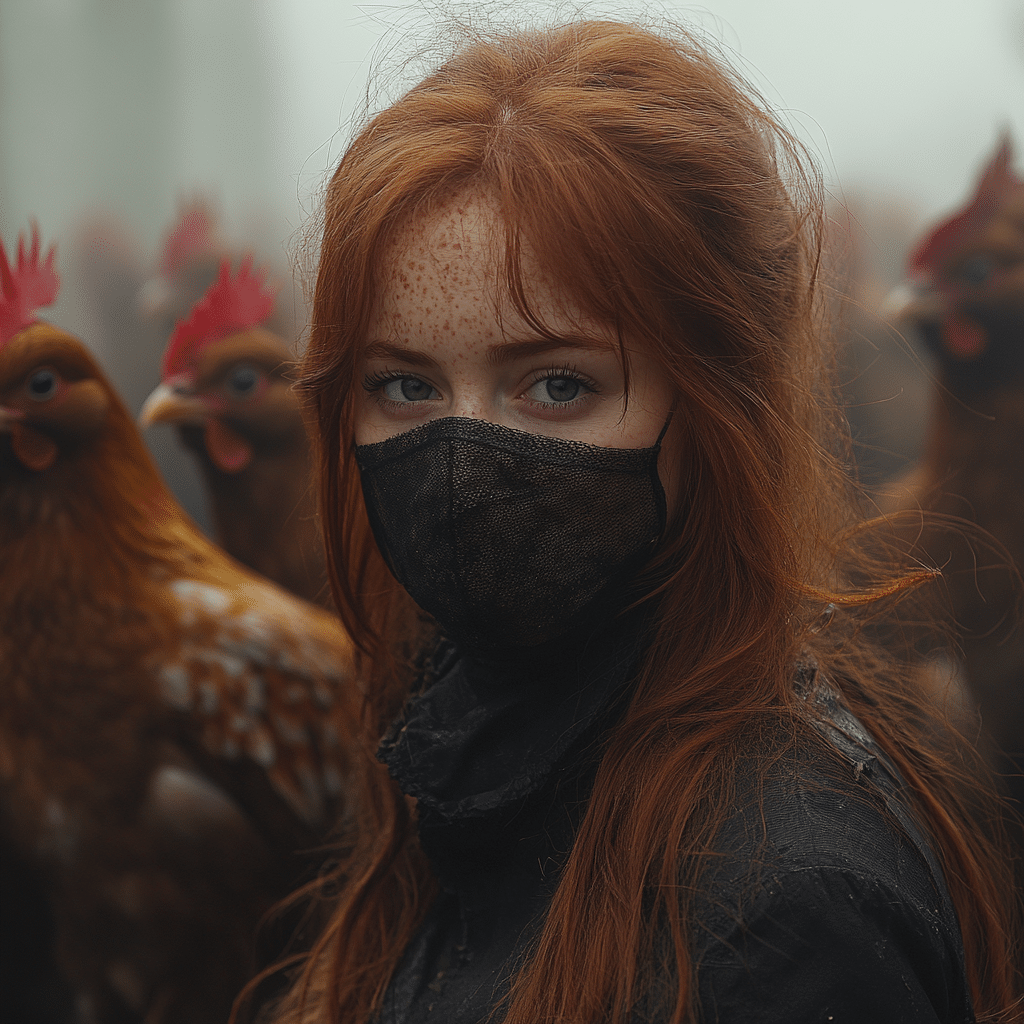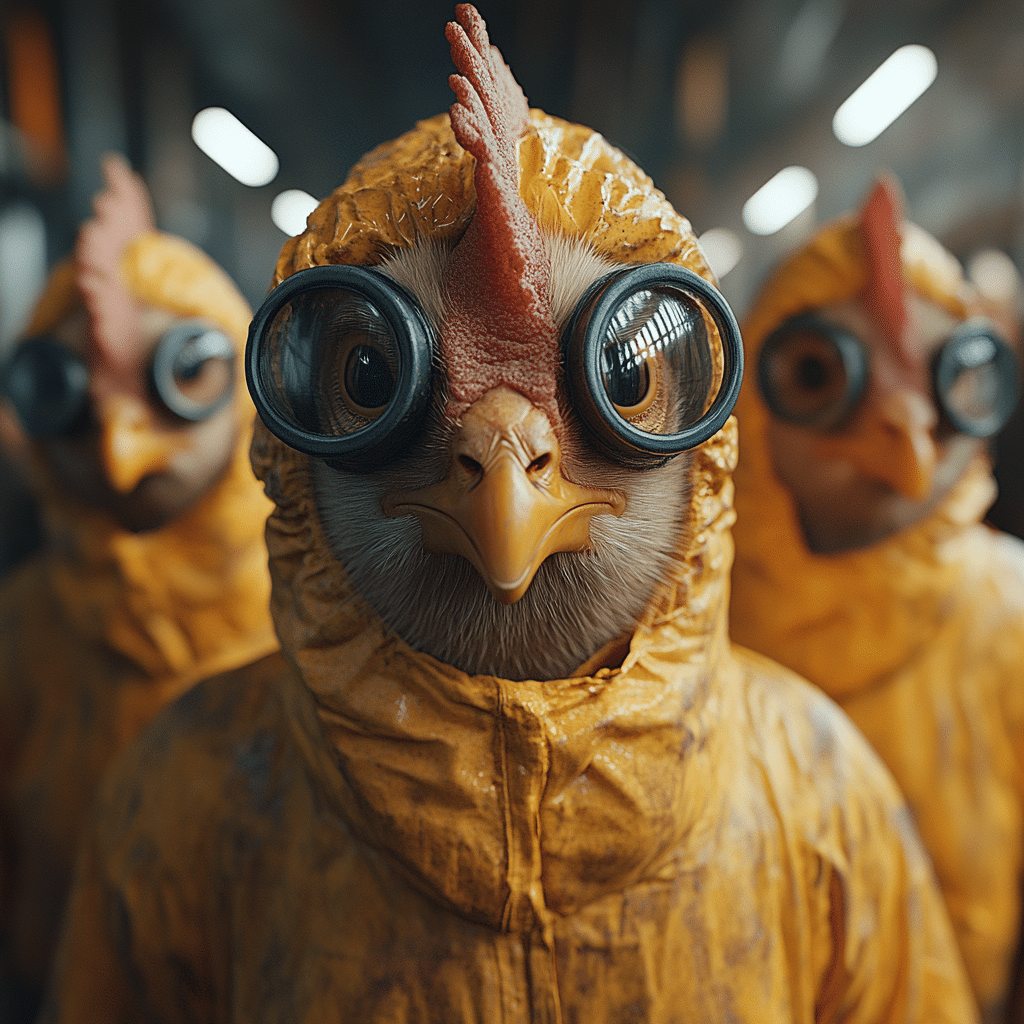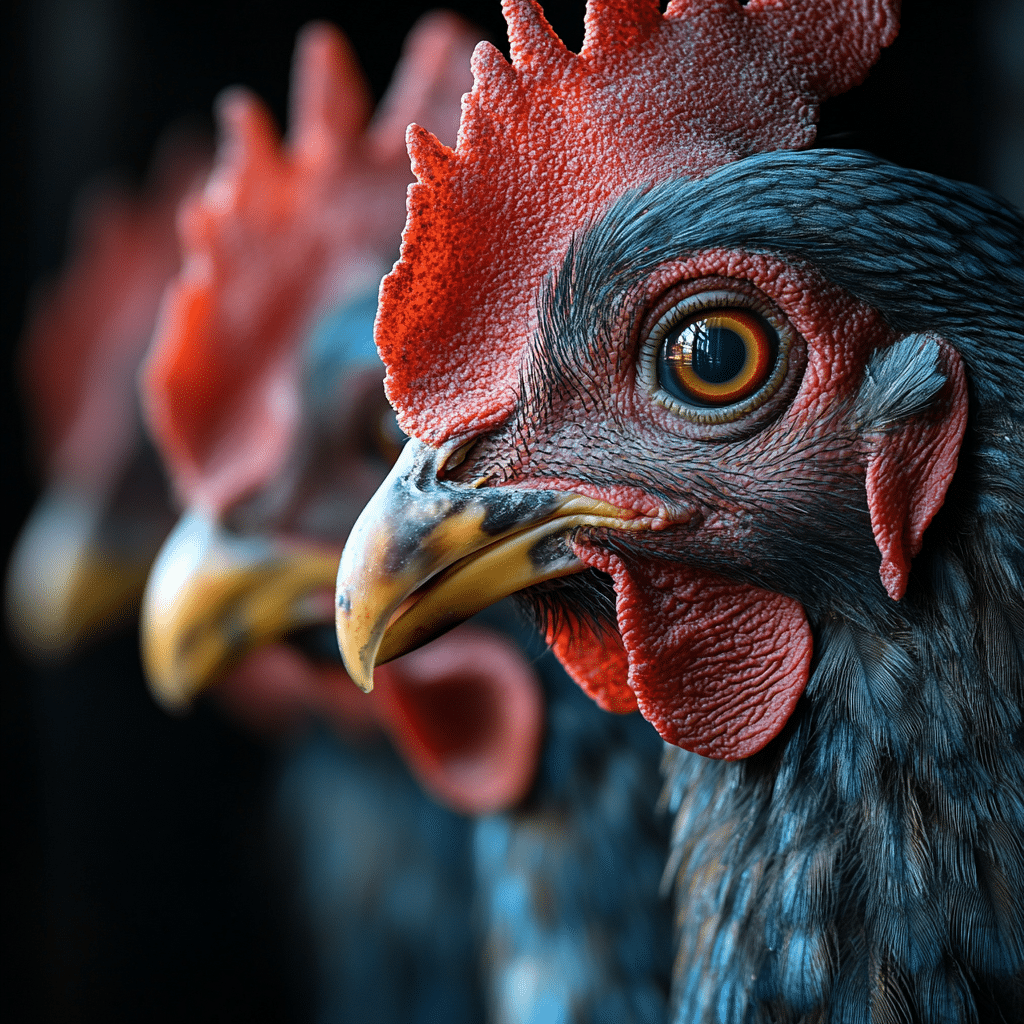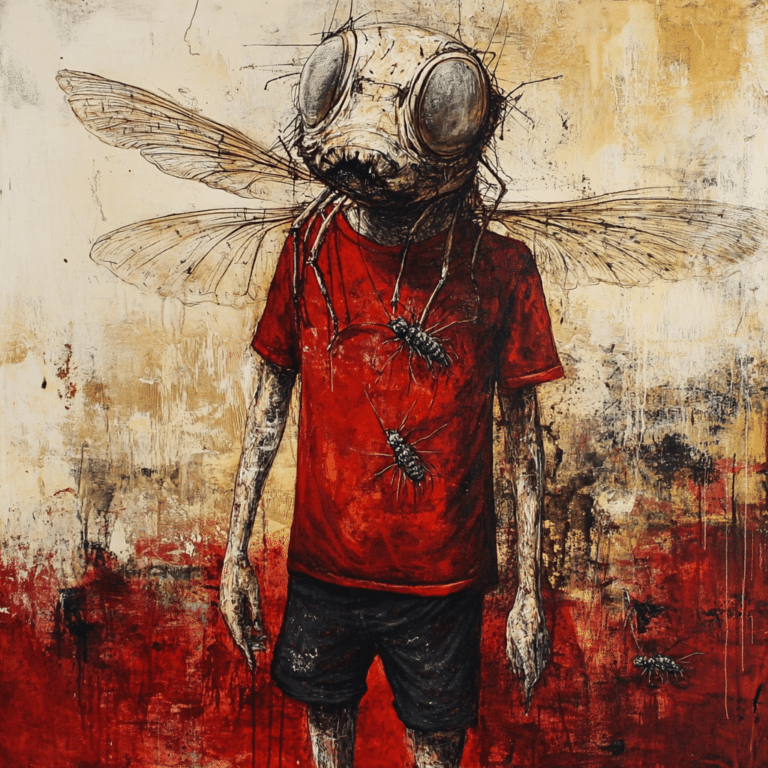As the bird flu pandemic threat grows, alarm bells are sounding from health officials worldwide. With recent outbreaks soaring, experts, including the CDC Director, are urging people to pay close attention. The bird flu pandemic is not just a far-off worry; it has real implications for public health, agriculture, and economies. It’s crucial we dive into what’s happening in our communities and globally concerning avian influenza cases, the strains in circulation, and the urgency with which we must respond.
The Rising Tide of the Bird Flu Pandemic: Understanding the Global Risk
With avian influenza spreading fast across various regions, countries are grappling with how to control a potential bird flu pandemic. Highly pathogenic avian influenza H5N1, which was first identified in Hong Kong in the late ’90s, has reemerged in alarming ways. The implications go beyond just sick birds; this virus is capable of jumping the species barrier to humans, albeit rarely. But let’s not kid ourselves—people who work around birds and poultry have to remain vigilant due to the potential high-risk exposure.
Recent reports indicate significant outbreaks in hotspots like China, Vietnam, and, yes, even the United States. The situation has caused upheaval in our agricultural sector, leading to the culling of millions of infected birds. Biosecurity is becoming a major concern; it feels like we’re living through a fire drill where the stakes couldn’t be higher. It’s about time we address this looming threat seriously.
Governments across the globe must bolster public health responses. As the CDC Director emphasizes, a well-planned strategy that includes vaccination, surveillance, and informed community outreach is vital to mitigate the risks involved. Our public health systems need to be alert and equipped for this looming bird flu pandemic, as ignorance is not bliss when lives are at stake.

Top 5 Factors Contributing to the Potential Bird Flu Pandemic
Investigating Global Health Parallels: Bird Flu and Other Epidemic Threats
The threats posed by the bird flu pandemic might seem separate, but they can actually shine a light on how interconnected our globe has become to epidemiological challenges. For example:
Bubonic Plague Case in Colorado
Believe it or not, the bubonic plague maintains a stubborn pulse. Recently, a bubonic plague case emerged in Colorado, highlighting the ongoing risk of zoonotic diseases. Just like bird flu, this is a stark reminder to remain alert, as diseases can shift and reappear in the blink of an eye.
Dengue Epidemic in Puerto Rico
On another front, Puerto Rico is battling a dengue epidemic. The transmission of disease is no small concern here. Climate change impacts disease vectors—similar to how warmer weather allows migratory birds to interact closely with domestic poultry, raising the specter of a bird flu pandemic. It’s a tangled web we must disentangle.
Bedbug Infestation in Paris
Let’s not overlook the bedbug infestation in Paris. While this seems remote from avian influenza, it underscores how public health management is a continuous battle. Diseases adapt, and so must our strategies to combat these evolving threats.
Oregon’s Bubonic Plague Case
As if history repeats itself, another isolated case of bubonic plague appeared recently in Oregon. This serves as another emblematic warning; if even bacteria thought subdued can rear their heads, then the potential for bird flu strains to mutate and spread should send chills down our spines.
Bowel Cancer Stomach Noises and Other Health Scares
Health awareness is critical. Think about the attention given to symptoms of bowel cancer; even common symptoms, like unusual stomach noises, can lead to serious conversations about vigilance. Staying informed about flu symptoms in light of a potential bird flu pandemic is more important than ever.

Navigating the Future: Preparing for a Bird Flu Pandemic
In the wake of every crisis lies an opportunity. Now is the time for nations worldwide to create a better-prepared public health framework. The pathway forward entails investing significantly in research, surveillance systems, and community health education. The stakes are high; we can’t afford to wait any longer.
As outbreaks of bird flu surge, transparency in reporting becomes essential. Panic and misinformation can spread as swiftly as the diseases themselves, making effective communication crucial. Working with international health organizations will bolster a coordinated global response. We’re all in this together, and it’s about time we act like it.
The bird flu pandemic isn’t just a flash in the pan; it poses a significant and multifaceted risk. This moment gives us an invaluable chance to enhance our collective health readiness. By investing in robust strategies, we stand a better chance of overcoming whatever public health challenges lie ahead, ultimately securing global health as we navigate through 2024 and beyond.
Let’s keep our eyes peeled and our ears to the ground. We know our nation’s stories of resilience rely on proactive measures and conservative values. If we act decisively and inform our communities, we’ll rise to meet the challenges of the bird flu pandemic—and whatever else comes next.
Bird Flu Pandemic: Trivia and Interesting Facts
The Rise of the Bird Flu Pandemic
Did you know that bird flu doesn’t just infect birds? The H5N1 strain, infamous for its potential to jump to humans, has a scary fatality rate of over 50% in infected individuals. Misleadingly, many think bird flu is limited to avian species, but this misconception could be dangerous, especially as outbreaks spike globally, ushering the looming threat of a bird flu pandemic. Interestingly, in April 2023, the virus caught headlines due to cases popping up in places as far-flung as the Turks and Caicos, where concerns about birds mingling with tourists raised alarms.
On another note, certain outbreaks have been linked to water sources—just like how Adriana la cerva shares the importance of water purification in diverse sectors. This twisted correlation underscores how interconnected nature truly is. Keeping tabs on infected poultry becomes crucial, as even a seemingly innocuous cockatoo could inadvertently spread the virus like wildfire.
Outbreak Patterns Worth Noting
Throughout history, bird flu pandemics have made headlines—not all of them with a happy ending. One fact many overlook is how the 1997 outbreak in Hong Kong marked the first documented instance of human transmission. This event raised flags and sparked immediate research initiatives to study this brand of avian influenza more closely. As per figures, cases have recurred sporadically, quite similar to the ups and downs in entertainment, like WWE star Roxanne Perez’s career. Just as she repeatedly faces different challengers, bird flu strains have been a constant adversary for public health experts.
Furthermore, studies suggest migratory patterns of birds play a pivotal role in spreading the virus across vast regions. Simplifying these patterns can be tricky, like navigating through Simp City! When bird populations relocate, they take the virus along for the ride—potentially back to their home countries. The more we understand these migratory behaviors, the better we can prepare ourselves.
Preparedness in Action
Humans aren’t entirely defenseless against the threat of a bird flu pandemic. Vaccination strategies, similar to those employed to combat other viral infections, are being developed to protect vulnerable populations. Just as wellness initiatives at Greenhouse Wellness aim to boost health, enhanced vaccines could one day safeguard at-risk individuals from bird flu. Moreover, the poultry industry is hard at work on biosecurity measures to mitigate outbreaks that could escalate. You could say it’s an ongoing battle, much like that faced in geopolitical arenas, including discussions around potential Israeli attacks on Iran.
Interestingly, experts suggest that understanding the behavioral patterns of birds could be akin to studying the strategies of legendary figures such as Miyamoto Musashi, a master of martial arts known for his tactical prowess. By predicting the unpredictable, we could significantly reduce the risk of a pandemic. While the situation looks grim, there’s hope. With diligence and innovation, humans can tackle the bird flu pandemic, just as fighters tackle their opponents in the arena.

Was the bird flu considered a pandemic?
No, the bird flu hasn’t been classified as a pandemic, even though it can cause serious illness in some cases. It’s a concern but doesn’t have the same widespread impact as other pandemics like COVID-19.
Should I worry about the bird flu?
You shouldn’t panic about bird flu, especially since it’s still pretty rare in humans. If you work around animals, it’s smart to stay informed and take precautions, but most people are not at risk.
What was the bird flu in 2006?
In 2006, bird flu was primarily linked to the H5N1 strain, which caused outbreaks in birds and resulted in human cases and deaths worldwide. It raised alarms because of its potential to spread to humans.
Will humans get bird flu?
Humans can get bird flu, but it’s not common. Most infections happen after close contact with infected birds or their droppings, so it’s important to avoid such situations.
Is bird flu in milk?
Bird flu isn’t found in milk. It’s primarily spread through birds, and there’s no evidence that dairy products are a risk for transmission.
How did people get the bird flu?
People usually catch bird flu through direct contact with infected birds or their contaminated environments, not from handling poultry products that are cooked properly.
What are the signs of bird flu in humans?
Signs of bird flu in humans can include flu-like symptoms, severe respiratory issues, and in some cases, more serious complications like pneumonia. Symptoms can vary by virus strain.
What states has bird flu been found in?
Bird flu has been found in various states, but recent outbreaks and higher attention on the issue have mostly been reported in California and some surrounding areas.
Is beef safe to eat for bird flu?
Beef is safe to eat in regard to bird flu as it’s transmitted mainly between birds. Properly handled and cooked meat does not pose a risk for transmission.
How many died from the bird flu?
Since H5N1 emerged, there have been several hundred human cases, resulting in 256 confirmed cases and around 151 deaths due to complications related to the virus.
Was there a bird flu pandemic in 2014?
There wasn’t a bird flu pandemic in 2014, but concerns arose due to specific strains circulating among poultry. Governments took measures to control outbreaks.
What is the new virus in the bird flu?
The latest bird flu strains include variants of H5N1 and H5N6, which have shown to spread among birds and have raised surveillance efforts.
Is bird flu still around 2024?
Yes, bird flu is still around as of 2024, with outbreaks continuing to be reported, prompting monitoring and control measures to protect both poultry and humans.
Can bird flu be cured?
There’s no definitive cure for bird flu, but antiviral medications and supportive care may help treat infected individuals, particularly if caught early.
Does bird flu spread by eating chicken?
Bird flu generally doesn’t spread by eating properly cooked chicken. Cooking poultry to the right temperature kills the virus and makes it safe to eat.
Is bird flu high risk?
While bird flu can be serious, most people aren’t at high risk unless they work directly with infected birds. Always follow safety guidelines to minimize exposure.
What is the survival rate of bird flu?
The survival rate for bird flu varies by strain and individual health, but overall, it can be quite low, especially in severe cases where the virus causes major complications.
Where is the bird flu outbreak in 2024?
Bird flu outbreaks have been reported in various global regions in 2024, particularly among wild birds and poultry. Ongoing monitoring continues to track its spread.
Can you recover from bird flu?
Yes, many people do recover from bird flu with proper medical treatment, especially if they have access to healthcare early on in their infection.
Was 1918 bird flu a pandemic?
The 1918 flu pandemic was caused by a type of influenza virus, but it was not specifically a bird flu pandemic as we understand it today; it affected the human population broadly.
Was there a bird flu pandemic in 1997?
There was a notable bird flu outbreak in 1997, particularly in Hong Kong, where it prompted significant public health responses to prevent further spread.
Would a bird flu pandemic be one of the most foreseeable catastrophes in history?
While a bird flu pandemic is concerning, predicting any pandemic can be tricky. Experts consider potential outbreaks possible, particularly with ongoing interactions between humans and birds.
When was the bird flu outbreak in the US?
The most significant bird flu outbreak in the US occurred in 2015, leading to large culling of affected poultry flocks and increased surveillance efforts to prevent further spread.





































